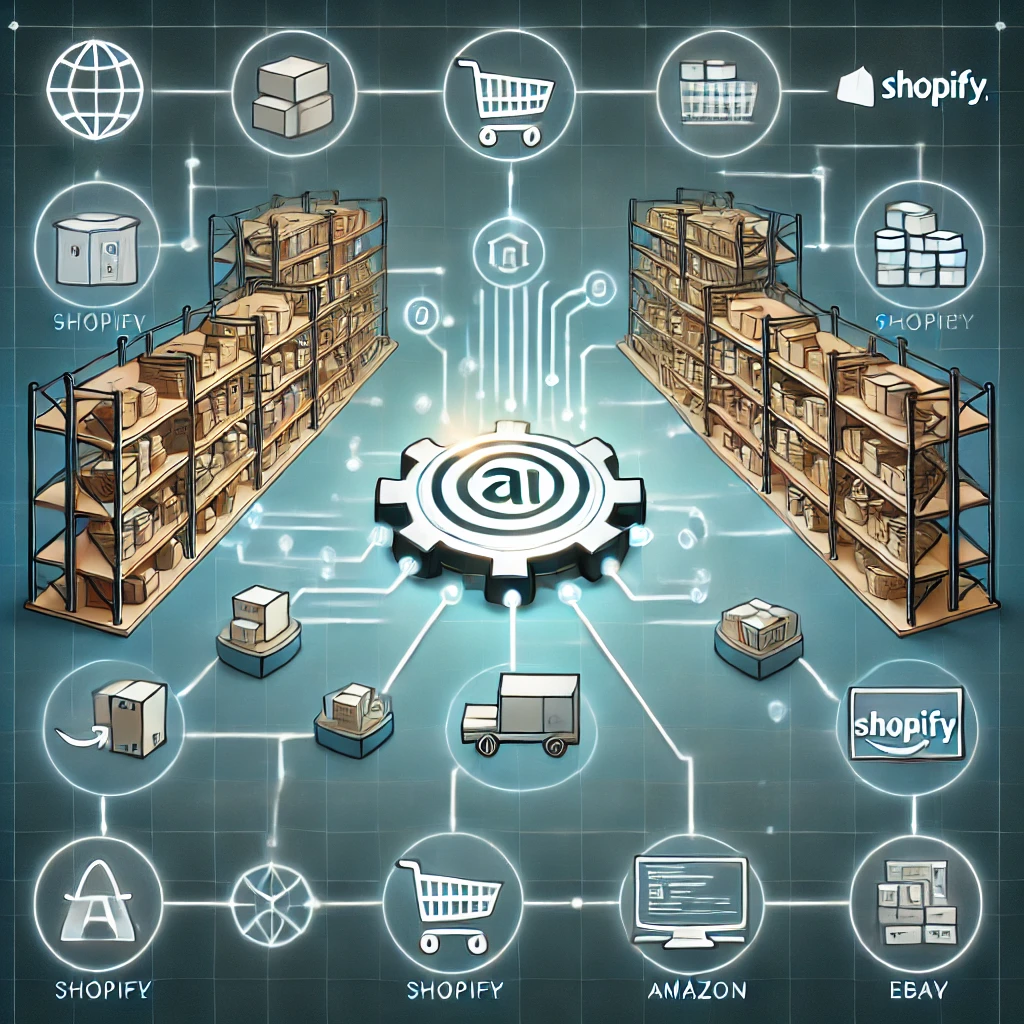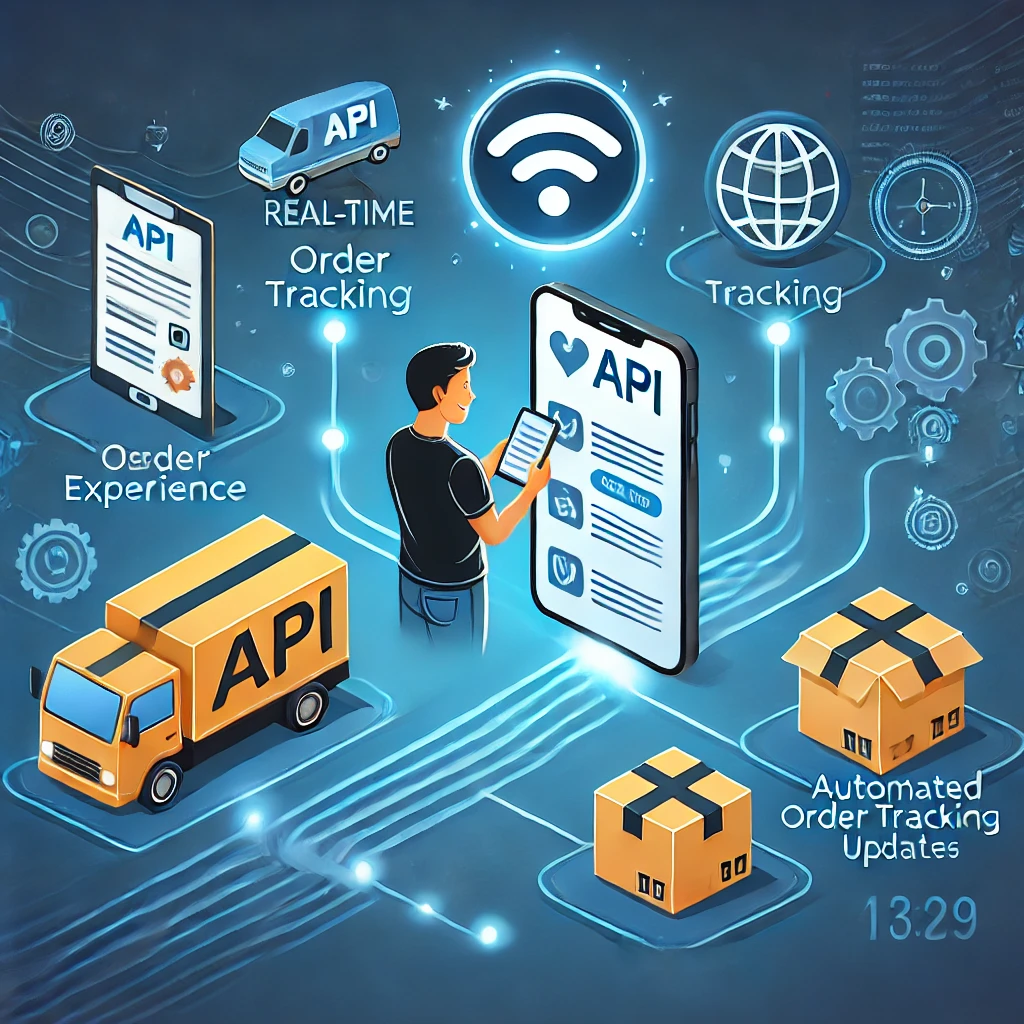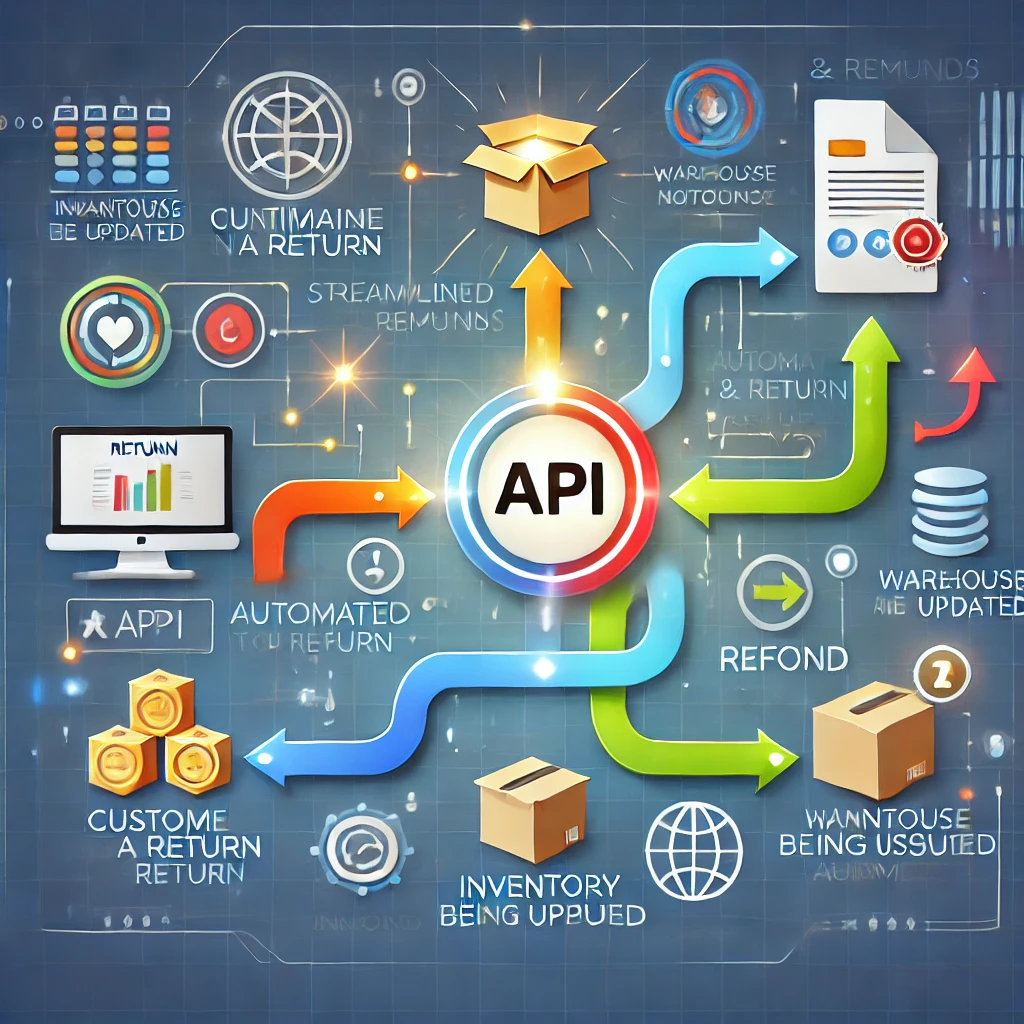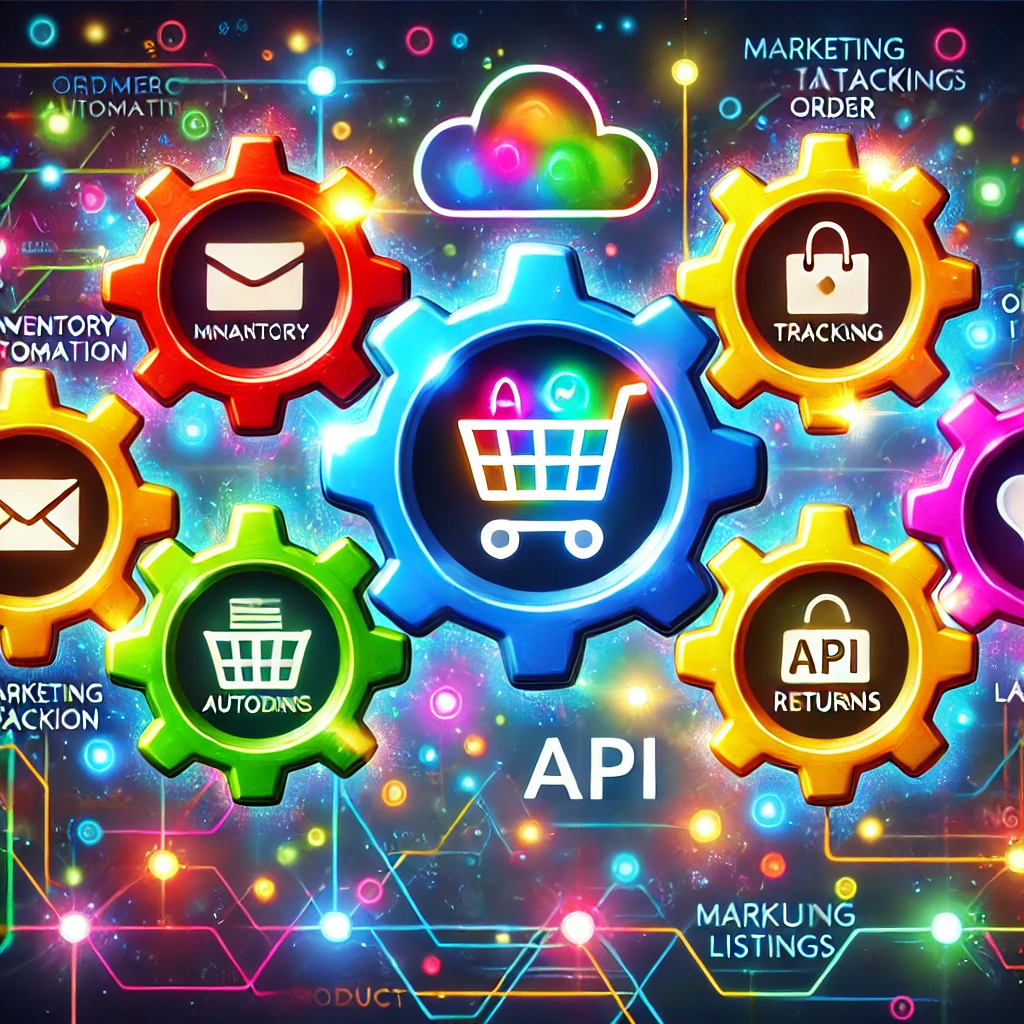Ecommerce API automation has emerged as a critical tool for businesses looking to streamline processes, reduce manual work, and deliver a superior customer experience. By automating routine tasks and integrating systems using APIs (Application Programming Interfaces), businesses can unlock tremendous growth potential. In this article, we’ll explore five powerful ecommerce API automation ideas that will help you boost efficiency and scale your business like never before.
Table of Contents
If you’re looking to dive deeper into the world of API automation and explore how it can specifically benefit small businesses, be sure to check out our detailed blog post, “API Automation for Small Businesses: 7 Proven Best Practices to Scale Efficiently.” In this article, we break down actionable strategies tailored for smaller operations that want to maximize efficiency, reduce manual tasks, and scale smartly without overburdening their resources. From automating customer service workflows to integrating accounting systems, this guide covers a range of practical examples to help you stay competitive in today’s fast-paced market.
Simplify Inventory Management with API Automation
Managing inventory is one of the most crucial and time-consuming tasks for any ecommerce business, regardless of size. Having too much stock can tie up valuable capital, leaving you with excessive inventory that may become obsolete or incur storage costs. On the other hand, too little stock can result in stockouts, leading to missed sales opportunities, frustrated customers, and a damaged reputation. Striking the right balance between supply and demand is often a challenge, especially when managing multiple sales channels.
This is where ecommerce API automation comes in as a game-changer. By automating your inventory management, you can synchronize inventory data across multiple platforms—whether it’s your website, third-party marketplaces like Amazon, Shopify, or eBay, or even your physical store. With API automation, your inventory levels are updated in real time. Every time a sale is made, the stock count is automatically adjusted across all channels, ensuring that your listings reflect accurate inventory. This minimizes the risk of overselling products, which can lead to negative customer experiences, and it helps prevent underselling, which can result in lost revenue.
For example, let’s say you sell a popular item on both Shopify and Amazon. Without automation, every sale would require a manual update of your stock count across all platforms. This manual process can lead to human error, delay in updates, and discrepancies in stock levels, resulting in overselling or stockouts. However, with an API integration, your inventory is seamlessly updated in real time on every platform—whether it’s Shopify, Amazon, or eBay—immediately after a sale is completed. This not only ensures accuracy but also frees up your team from laborious manual updates.

Benefits:
- Real-time inventory updates
- Reduced risk of stockouts and overstocking
- Increased operational efficiency across channels
Enhance Customer Experience with Automated Order Tracking
Customers today have high expectations when it comes to the speed and transparency of delivery updates. The moment they complete a purchase, they want to be kept in the loop regarding the status of their order. Any uncertainty or lack of communication can lead to frustration and unnecessary inquiries to customer support. Ecommerce API automation addresses this need by enabling businesses to provide real-time tracking notifications via SMS or email, keeping customers informed at every step of the delivery process and significantly enhancing the overall customer experience.
With API automation, you can integrate your ecommerce platform with the APIs of major shipping carriers such as FedEx, UPS, and DHL. These APIs allow your system to automatically pull shipping and tracking information and send timely updates to your customers without any manual intervention. For instance, as soon as an order is shipped, a notification can be triggered to inform the customer, complete with tracking details. If the order status changes—such as when the package is out for delivery or successfully delivered—the system will automatically notify the customer with the latest update.
This level of automation ensures that customers remain confident in your service, as they are always aware of the status of their orders, whether they’re waiting for a delivery or have a question about its progress. By reducing the need for customers to reach out to support teams for order tracking, businesses also benefit from a significant reduction in the volume of inquiries, freeing up customer service representatives to handle more complex issues.
Platforms like Shopify and WooCommerce make it incredibly easy to integrate with shipping carrier APIs, providing built-in functionality or plug-ins that support these real-time notifications. This means that, with a few clicks, you can set up seamless shipping and tracking automation, giving your customers full visibility into their delivery process. With every update delivered promptly and automatically, you can significantly boost customer satisfaction and loyalty.
In addition to the convenience this brings to your customers, real-time order tracking with API automation can also reduce the stress of managing multiple shipping carriers. Instead of juggling different tracking systems, you can centralize your operations in one platform, allowing for a smoother, more efficient logistics process.

Benefits:
- Improved customer satisfaction
- Reduced customer service workload
- Automated and consistent communication
Optimize Marketing Campaigns with Automated API Integrations
Marketing is the lifeblood of any ecommerce business, and in today’s highly competitive landscape, the ability to engage customers through targeted campaigns is crucial to driving growth. However, managing multiple marketing channels—email, social media, paid ads, and more—can be overwhelming and time-consuming. This is where ecommerce API automation comes into play, offering a way to streamline and elevate your marketing efforts by connecting various tools, platforms, and systems for a seamless data flow.
By integrating APIs between your ecommerce platform, email marketing services like ActiveCampaign or Mailchimp, customer relationship management (CRM) systems, and social media tools, you can automate many aspects of your marketing strategy. This automation allows you to create highly targeted, data-driven campaigns that react instantly to customer behavior and preferences.
For example, let’s say a customer adds items to their cart but leaves your site before completing the purchase. Without automation, following up on these abandoned carts would require a manual process—if it happens at all. However, with ecommerce API automation, your system can automatically trigger a retargeting email campaign whenever a cart is abandoned. This email can be personalized with the exact items left behind, along with a discount or a reminder to complete the purchase. Platforms like ActiveCampaign or Mailchimp make it easy to set up these automations, and with API connections to your ecommerce site, everything happens without your team needing to lift a finger.
But automation doesn’t stop at email campaigns. By connecting advertising platforms like Facebook Ads and Google Ads via APIs, you can automatically retarget customers who have shown interest in specific products on your website. For instance, if a customer views a product page without making a purchase, the API integration can trigger retargeting ads across Facebook or Google that show the same products the customer previously viewed. This kind of personalized marketing approach dramatically increases the likelihood of conversion, as customers are more likely to engage with ads that reflect their interests.
Additionally, automation ensures that your marketing campaigns are data-driven and real-time. You no longer have to manually export customer data, analyze it, and import it into different marketing tools. APIs allow you to sync customer data across platforms instantly, making it easy to segment your audience based on behavior, purchase history, or preferences. For example, when a customer makes a purchase, the API can update your CRM with the latest transaction information, automatically adding the customer to post-purchase email flows or loyalty programs.
Moreover, by using automation for cross-channel marketing, you can create a consistent and cohesive customer experience. Whether it’s email, social media, or paid ads, all marketing messages are aligned and personalized, providing customers with relevant content wherever they are in their buying journey. This not only improves engagement but also helps in building long-term customer relationships.
In summary, ecommerce API automation enables your marketing campaigns to be more precise, timely, and impactful. From abandoned cart emails to retargeting ads and real-time customer segmentation, the possibilities are endless. By automating the data flow between your ecommerce platform, marketing tools, and advertising channels, you can create a marketing engine that runs efficiently and delivers powerful results—all while freeing up your team to focus on strategy rather than manual tasks.

Benefits:
- Personalized, targeted marketing campaigns
- Increased customer retention and conversions
- Reduced manual marketing tasks
Automate Product Listings Across Multiple Platforms
Expanding your reach by selling across multiple ecommerce platforms is one of the most effective ways to grow your business. With millions of customers browsing sites like Shopify, Etsy, eBay, and Amazon daily, listing your products on these platforms gives you access to a wider audience and increases your chances of making more sales. However, the process of manually updating product listings across all of these platforms can be incredibly time-consuming and prone to human error. This is where ecommerce API automation can significantly simplify and improve your workflow.
Managing product listings manually—updating descriptions, prices, images, or stock levels on different platforms—takes up valuable time and increases the likelihood of mistakes, such as inconsistent product information or incorrect stock counts. These errors can lead to customer dissatisfaction and missed sales opportunities, which can ultimately hurt your business’s reputation. With ecommerce API automation, you can eliminate these challenges by automating the entire product listing process across multiple platforms, ensuring consistency and accuracy in real time.
By integrating APIs from platforms like Shopify, Etsy, eBay, and Amazon, you can automatically sync your product listings across all of these channels. This means that when you update a product’s description, change its price, or adjust stock levels in one place, the changes are automatically applied across all platforms. Not only does this save time, but it also ensures that your product information remains accurate and up-to-date everywhere your products are sold.
For example, if you make a price adjustment on a product in your Shopify store, the API integration will instantly update the pricing on your Amazon, Etsy, and eBay listings as well. This eliminates the risk of price discrepancies between platforms, which could lead to customer complaints or lost sales. Similarly, if a product runs out of stock on one platform, the API will automatically update the stock levels across all other channels, preventing overselling and the resulting customer frustration.
Tools like ChannelAdvisor and Sellbrite specialize in providing these types of API integrations, allowing you to manage all of your product listings from a single dashboard. These platforms make it easy to push product updates to multiple ecommerce sites simultaneously, giving you a unified view of your listings, orders, and inventory. This centralization not only reduces the risk of errors but also streamlines your operations, freeing up time for other important tasks such as marketing, customer engagement, or product development.
In addition to ensuring consistency, API automation allows you to scale your business more quickly. By removing the bottleneck of manual updates, you can focus on expanding your product range or exploring new sales channels without worrying about the tedious work of managing listings. With automation in place, you can confidently grow your presence on more platforms, knowing that your product information will always be accurate and up to date.
Furthermore, automation provides valuable analytics that can inform your business strategy. By monitoring how products perform across various platforms from a single dashboard, you can gain insights into which channels are driving the most sales, which products are performing best, and where you might need to make adjustments. This data can help you optimize your listings, pricing strategies, and inventory management for maximum profitability.
In conclusion, ecommerce API automation is a powerful tool for businesses looking to expand their reach and grow efficiently. Automating product listings across multiple platforms like Shopify, Etsy, eBay, and Amazon saves time, reduces errors, and ensures consistent product information across all channels. With tools like ChannelAdvisor or Sellbrite, you can manage everything from one place, giving you the ability to scale faster and more effectively while focusing on what matters most—growing your business.

Benefits:
- Time-saving automation of product listings
- Consistent information across all sales channels
- Faster market expansion and increased visibility
Streamline Returns and Refunds Process with API Automation
Handling returns and refunds can be a logistical headache, especially as your business grows. Fortunately, ecommerce API automation can simplify this process by integrating your ecommerce platform with your returns management system.
When a customer requests a return, the API integration can automatically update inventory, issue refunds, and notify the warehouse to expect the return. Platforms like Loop Returns and Returnly offer automated return solutions that connect directly with Shopify or Magento, giving both you and your customers a smooth, hassle-free experience.

Benefits:
- Faster and more efficient return processes
- Reduced manual intervention in refunds
- Improved customer experience during returns
Unlock the Full Potential of Ecommerce API Automation
Ecommerce API automation has evolved from being a “nice to have” feature into an absolute necessity for businesses that aim to stay competitive and grow efficiently in today’s fast-paced market. With increasing customer demands for speed, accuracy, and personalized experiences, manually managing key ecommerce operations has become unsustainable. Whether it’s inventory management, customer notifications, marketing campaigns, product listings, or handling returns, automating these tasks through API integrations can dramatically transform how your business operates. By implementing ecommerce API automation, you can free up valuable time and resources, allowing you to focus on strategic initiatives that drive growth and scalability.
One of the primary benefits of API automation is that it enables you to streamline processes that would otherwise require manual input, which is time-consuming and prone to human error. Inventory management, for example, becomes much simpler with automation, as APIs allow for real-time updates across all sales channels. This ensures that stock levels are always accurate, preventing overselling or underselling, and helping you avoid costly mistakes. The ability to automate customer notifications also means that you can keep your customers informed throughout the purchase and shipping process, significantly improving their overall experience and reducing the volume of customer service inquiries.
Marketing automation through API integration further enhances your ability to run personalized, data-driven campaigns. From retargeting emails for abandoned carts to automated social media advertising, API automation ensures that your marketing efforts are timely, relevant, and targeted. By syncing your ecommerce platform with marketing tools like ActiveCampaign, Mailchimp, or Google Ads, you can instantly trigger campaigns based on customer behavior, such as when they browse a product or make a purchase. This level of marketing automation enables you to drive more conversions without requiring manual intervention.
Another critical aspect of ecommerce that benefits from API automation is product listing management. Expanding your business across multiple platforms like Amazon, Shopify, Etsy, or eBay requires constant updates to product descriptions, prices, stock levels, and more. Without automation, keeping track of all these listings can be overwhelming, but with APIs, you can manage everything from a single dashboard. This ensures consistency and accuracy across all platforms, allowing you to expand your reach without adding complexity to your operations.
Additionally, automating the returns and refunds process improves efficiency and customer satisfaction. APIs can integrate your ecommerce platform with returns management systems, enabling a seamless flow of information. When a customer initiates a return, the system automatically updates inventory levels, processes the refund, and notifies the warehouse. This creates a smoother experience for both your business and your customers, enhancing trust and loyalty.

Explore Automation Tools to Get Started
Now that you’re aware of the power of ecommerce API automation, it’s time to take action. Begin by identifying areas in your business where automation can save time and reduce errors. Then, explore the wide range of automation tools available to see which APIs best suit your needs.
Some recommended platforms to explore:
- Zapier: Automates workflows by connecting apps and services.
- Integromat: Advanced automation for connecting various apps and services.
- ShipStation: Streamlines the shipping and tracking process.
- TradeGecko: An excellent solution for inventory management automation.
- Mailchimp: Perfect for email marketing automation.
Integrating these tools will help your ecommerce business run smoother, allowing you to focus on growth and innovation. Ready to take the next step? Start experimenting with these automation ideas and watch your business reach new heights.


One Comment